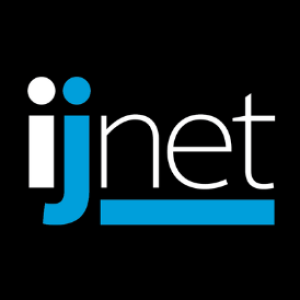Wearable devices, virtual reality and modular mobile are just a few buzzwords journalists may be adding to their vernacular.
Each year, digital strategist Amy Webb and her consulting firm Webbmedia Group release a list of tech trends to watch for in the coming year.
Featuring a total of 55 trends, this year's report explores a wide range of emerging technology and tools, and IJNet's rounded up its top picks to keep journalists up to speed.
One-to-few publishing
Newsletters, podcasts and niche networks that captivate smaller audiences will make a comeback in 2015.
Rather than casting wide nets in hopes of capturing the right audience, advertisers are resorting to niche networks. Creating a product, such as a podcast or newsletter, directly geared toward a smaller, specific audience allows media or other brands to maintain a more personal relationship with audiences. A few newsletters and podcasts to watch:
- Media REDEF, newsletter
- Today in Tabs, newsletter
- The Ann Friedman Weekly, newsletter
- This American Life, podcast
- Serial, podcast
Video
Consumers are creators, uploading videos to social services such as Vimeo, Instagram and Vine.
According to the trend report, unique monthly visits to video sites doubled in 2014 and most of those users visited sites like Facebook and YouTube on their mobile devices. But with lag-time and buffering as current pitfalls, Webb says better speed and delivery are what's next for the global medium.
WebRTC is working on technology that will help computers talk directly to each other rather than relying on a WiFi network, which requires several steps before a user is connected, making it slower. If successful, WebRTC will allow you to access videos — and Internet as a whole — faster.
Algorithms
Algorithmic curation is a process that automatically determines what content should be displayed or hidden and how it should be presented to your audience.
Since its inception, Facebook has made decisions about what should appear in your NewsFeed using its algorithm, which decides which posts in your network will "engage you most." Google and Yahoo News also use your online behavior to determine what content you might be interested in. In 2015 — and long after it — algorithms curating news will begin to track our most recent behavior.
"Rather than delivering a full breaking news story to our mobile phones, algorithms will deliver the 'waiting in line at Starbucks' version of that story, a more in-depth longread to our tablets, and a video version of that story once we're in front of our connected TVs," Webbmedia Group writes in its report.
Privacy
Ongoing breaches have continued to dismantle the public trust.
Aspects of privacy took up seven trend slots on the Webbmedia Group’s list this year.
As consumers — which include journalists — become more concerned about their protection online, companies are responding by releasing products to shield us from data breaches. Here are some to look out for or try in 2015:
- Blackphone is a smartphone that prevents others from eavesdropping on your conversations.
- Open Whisper Systems provides encryption for Android calls.
- Twitter’s Digits will allow you to manage all applications from one place.
- MeWe is a private social-networking and file-sharing service.
Security
We have not seen other media organizations developing systems to securely transfer information or encrypt their own data.
Due to a significant number of cyber attacks in 2014, the trend report recommends tightening up digital security in order to stay safe.
The Guardian already prepared its SecureDrop system in June 2014, but the report points out few other news organizations followed suit. SecureDrop allows anyone to submit confidential documents to Guardian reporters without having to worry about being tracked online.
Intelligent Drones
The upcoming crop of drones will have the ability to think and make inferences.
As drones become more popular as a reporting method — the University of Nebraska-Lincoln even has a Drone Journalism Lab — they’ve also become smarter. Upcoming micro-drones and drone bots that will work without human direction will make drone journalism even more exciting in 2015.
Collaborative Software
2015 may be the beginning of the end of email as we know it, as more and more offices abandon internal email systems for these apps.
Need an easier way to connect with editors or fellow reporters while you’re on-the-go? Try substituting email with productivity tools that combine email, instant messaging, social media and cloud storage. If you’ve already tried Yammer or HipChat, test out Wrike or Slack.
Breaking from the idea that Facebook sucks up valuable work time, the social network will most likely debut an interoffice communication system called Facebook at Work in 2015.
To read the full 2015 Trend Report, click through the slides below.
Main image CC-licensed by Flickr via Merrill College of Journalism Press Releases.


